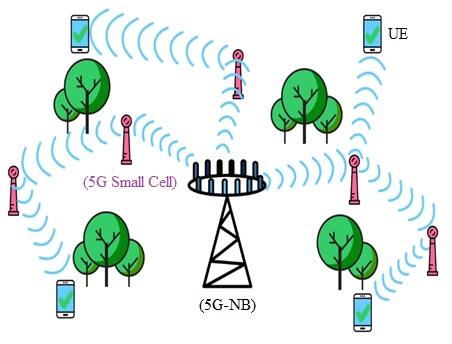In today's hyper-connected world, the demand for high-speed data, seamless connectivity, and robust mobile networks is rapidly increasing. This shift is primarily driven by the exponential growth of smartphones, IoT devices, smart cities, and emerging technologies like 5G. In response, telecom operators and service providers are turning to innovative solutions to ensure network efficiency and coverage. One such solution gaining widespread adoption is the small cell network. Small cell networks offer a cost-effective and scalable way to enhance wireless capacity, coverage, and performance, especially in high-demand urban and indoor environments.
Small cell networks are low-powered cellular radio access nodes that operate in licensed, unlicensed, or shared spectrum. These compact base stations typically cover smaller geographic areas than traditional macro cell towers, usually ranging from a few meters up to a few kilometers. The core idea behind small cells is to bring the network closer to the end users, thereby improving data speed and reducing latency. This infrastructure is especially beneficial in densely populated areas such as stadiums, shopping malls, office buildings, and transportation hubs, where macro cells often struggle to deliver consistent service quality.
There are three main types of small cells: femtocells, picocells, and microcells, each serving specific coverage and capacity needs. Femtocells are typically deployed in homes or small offices, supporting a handful of users. Picocells are suited for medium-sized indoor environments, while microcells are designed for outdoor use, providing coverage over a wider area than femtocells or picocells. Collectively, these cells complement macro networks by filling in coverage gaps and boosting capacity in areas with high data demand.
The deployment of small cell networks is becoming increasingly important with the rollout of 5G. Unlike previous generations, 5G requires higher frequencies such as millimeter waves, which have limited propagation ranges and are more easily obstructed by buildings and other obstacles. Small cells help overcome this limitation by providing dense and localized coverage, making them a critical component of 5G infrastructure. They enable ultra-low latency, faster data speeds, and support for a higher number of connected devices, paving the way for applications like autonomous vehicles, remote surgery, and smart manufacturing.
One of the key benefits of small cell networks is their ability to improve network performance and user experience without the need for extensive infrastructure investment. Traditional macro cell towers are expensive and time-consuming to install, especially in urban settings where space is limited and regulatory hurdles are common. In contrast, small cells are compact, can be mounted on existing structures like streetlights and utility poles, and require less power and backhaul. This makes them more agile and cost-effective to deploy, especially in targeted locations that demand enhanced connectivity.
Moreover, small cells play a significant role in enabling network densification, which is essential to meet the rising data traffic. As mobile usage patterns shift and become more data-centric, networks need to evolve accordingly. Small cell deployment allows operators to offload traffic from congested macro cells, distribute network load more efficiently, and ensure better quality of service. In this way, small cells not only improve capacity but also enhance the overall reliability and resilience of mobile networks.
Despite their advantages, small cell networks do present some challenges. One of the primary concerns is interference management, particularly in dense urban areas where multiple small cells may be operating in close proximity. Efficient planning and coordination are essential to avoid signal overlap and degradation. Additionally, small cells require reliable backhaul connections to the core network, which can be complex and costly to establish in certain environments. Addressing these issues involves advanced network planning tools, dynamic spectrum allocation, and the use of intelligent management systems to optimize performance.
Another challenge lies in the regulatory and permitting process for deploying small cells. Although smaller in size, these units still require municipal approvals, especially when installed in public spaces. Streamlining regulatory frameworks and fostering public-private partnerships can help accelerate deployment and maximize the benefits of this technology.
As the telecommunications industry continues to evolve, the future of small cell networks appears promising. Innovations such as Open RAN (Radio Access Networks), AI-powered network management, and edge computing are expected to further enhance the capabilities and efficiency of small cells. These advancements will not only support the growing demands of 5G but also prepare the groundwork for future technologies like 6G.
Source - https://www.marketresearchfuture.com/reports/small-cell-networks-market-5360
Small cell networks are revolutionizing the way mobile connectivity is delivered. By providing localized coverage, enhancing network capacity, and enabling the next generation of digital applications, small cells are bridging the gap between traditional infrastructure and future demands. As network requirements continue to escalate, the deployment of small cell networks will be instrumental in achieving a truly connected, smart, and resilient digital ecosystem. Embracing this technology is not just a choice but a necessity for telecom operators aiming to stay ahead in the race for seamless, high-performance mobile communication.



